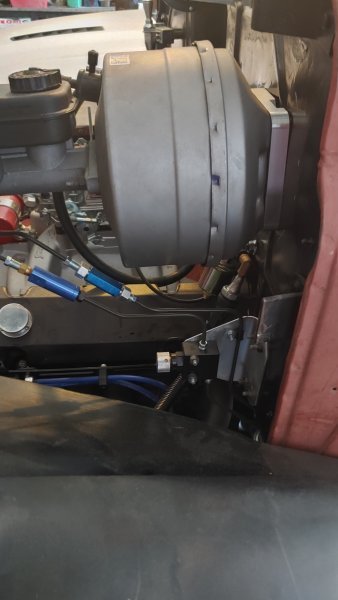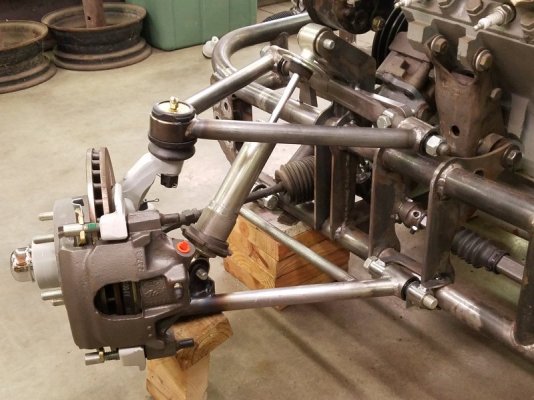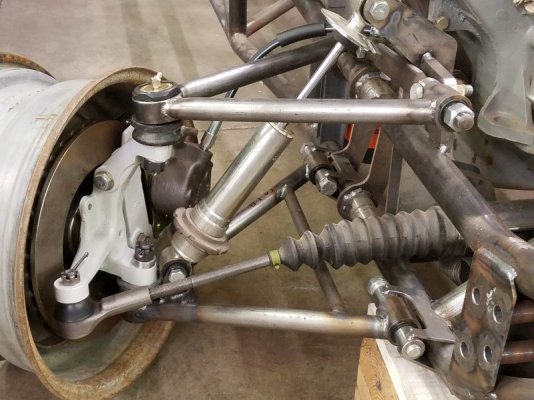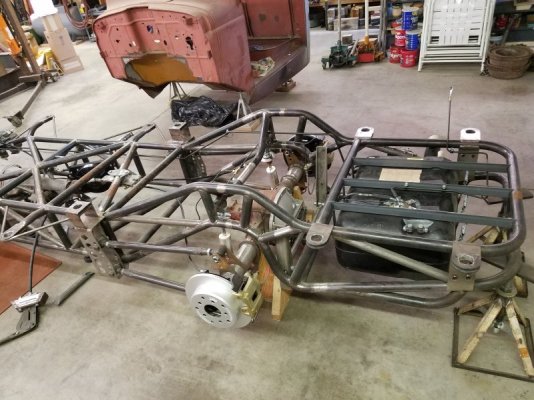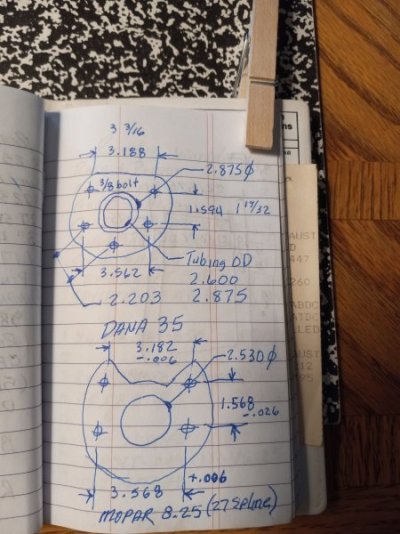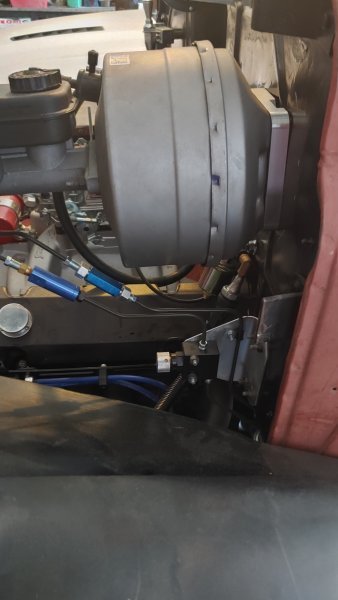Do you have a thread somewhere where you go into detail on what all you did and how you did it
No I didn't create a thread. The build
has taken over 20 years to build and I
picked up the parts needed for the
brakes along the way. When designing
the steering, I chose Ford Pinto
spindles as they are super strong
which set the style of front brake
components. The rear axle is a
chrysler 8.25 which has the same
axle flange bolt hole pattern used
on Jeep's D35, hence the Jeep disc
conversion kit (half the cost of a
Wilwood kit). The calipers they use
in this kit are from a Ford Explorer.
The brake lines are 1/8" I'd. (less
fluid, higher pressures). Easy to
route and bend.
Chrysler New Yorker dual diaphram
Booster (dual diaphram boosters
are recommended when running 4
wheel disc systems) which worked
well with the Dodge Diplomat brake
pedal assembly. (correct pin length
and pedal ratio). It also was a direct
bolt in behind the dash of a 80
year old Plymouth truck. Just had to
drill two additional holes in the firewall
and reconfigure the pedal arm to
gain more footwell room.
A 1.000 to 1.031 bore dia MC. (also
recommend for a 4 disc system).
2lb check valves in both front and
rear brake line circuits to prevent
fluid bleed back, which results in
less pedal travel and quicker pad
to rotor contact, and 2lbs is not
enough to cause excessive drag
on the rotor.
Note the adjustable proportioning
valve below the booster and the 2lb
check valves.
Also used in calculations was the
suspension (noted as hertz). A
frequency of 1.0 in the front and 1.3
in the rear, based on 1700 lb front
axle weight, 1400 lb rear axle weight,
two passengers and a full tank.
No cross transfer of weight
calculations are needed for straight
line braking.
Both a Granada and a Jeep outweigh
my build by close to a thousand lbs.,
so the components chosen are
adequate enough to do the job at
a much cheaper price, and are more
readily available.
Think of this as you're on a ten speed
bicycle. What happens when you
hit the front brake first? *** over
tea kettle as that momentum is
still trying to move forward. As
kids we learned to leave that front
brake alone until the rear brake
had a chance to slow some of that
momentum down a little. That same
rule of physics applies to a four
wheeled bicycle.
